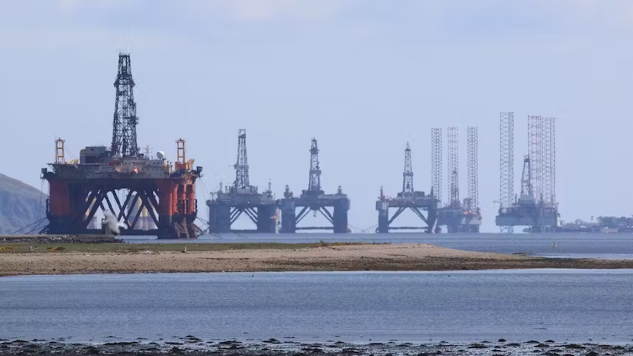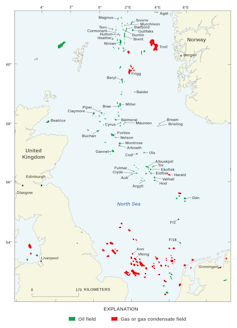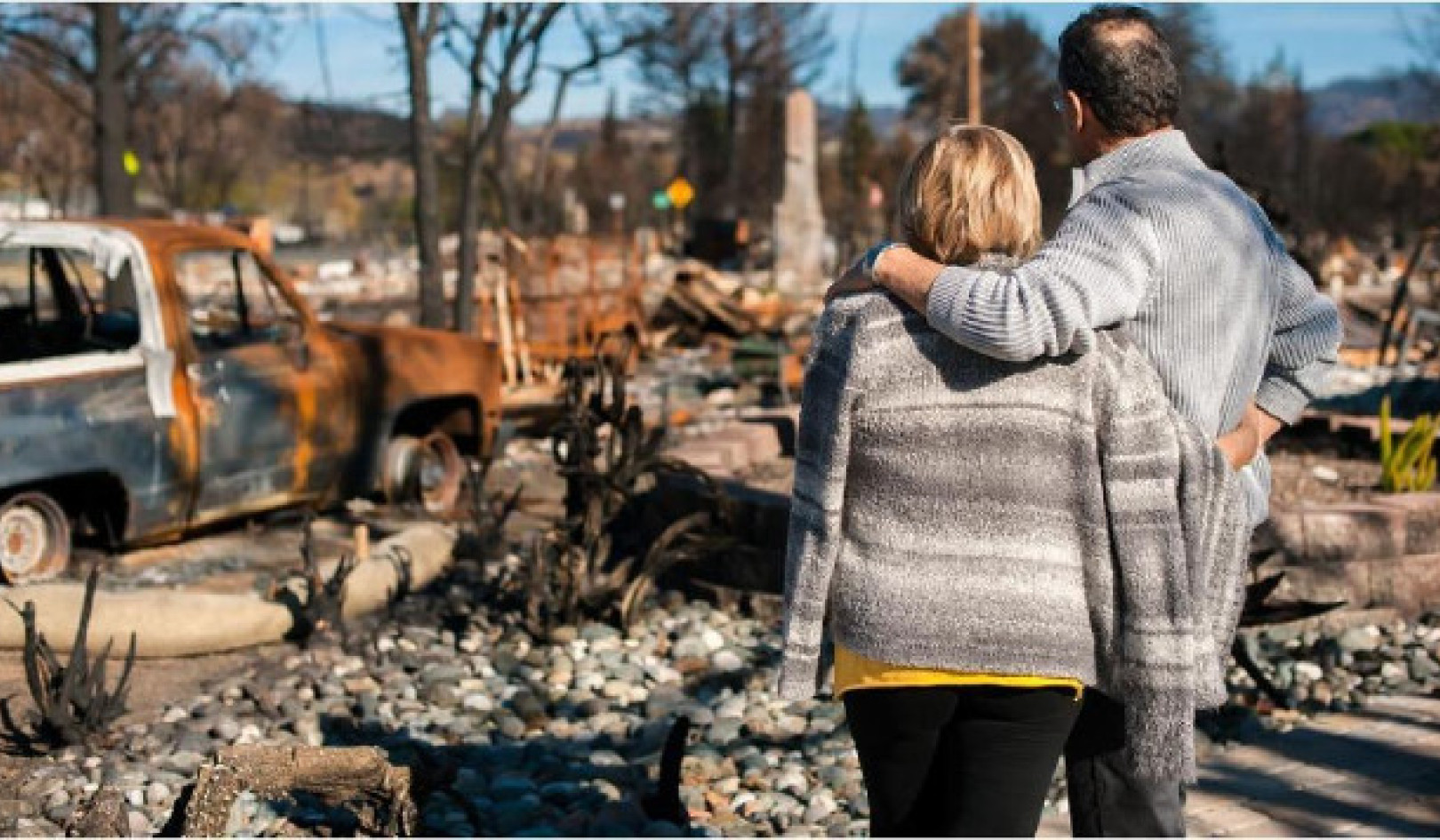
An oil rig graveyard in Cromarty Firth, Scotland. Pxfuel
Keeping control of our planet’s thermostat is proving tricky these days. Temperatures are rising slowly, and inaction is proving costly as we awkwardly lurch towards a cleaner future.
Some industries are proving stubbornly difficult to decarbonise, and we are likely to miss the key 1.5°C warming target. One response: big machines that suck CO? out of the air, also known as direct air capture.
Stemming from something like a realist science-fiction flick, these literal “skyscrapers” act like massive industrial vacuum cleaners. They strip the CO? from the air and store it in a secure location for at least 1,000 years. However, there are various problems with these machines, which is why they may be best suited to oil rigs.
The problems are threefold. Even if they were rolled out at a vastly bigger scale, they are still expensive, noisy and a major eyesore, which means they cannot be built where people live.
Also, for these machines to work at their best, they would ideally be powered by renewable energy which is why wind power has been endorsed by leading scientists as the perfect marriage for direct air capture.
On land, wind turbines the size of high-rise buildings have their critics. But offshore, there are no locals to bother and the turbines can produce more energy as the wind supply is more consistent.
There is also an abundance of sites below the sea where oil and gas has been extracted and where CO? can now be stored.
Make use of abandoned oil rigs
Placing CO? scrubbers on abandoned oil rigs and sending them out to sea would allow us to take advantage of this. It would also provide a way to deal with the dozens of abandoned oil rigs that pose a serious issue for the industry as they are expensive to decommission. The UK’s rigs alone could cost an estimated £24 billion.
An international convention known as Ospar also dictates that such rigs cannot stay in the sea and must be removed. This conflicts with UK policy on the preservation of marine life since the legs of the rig can act as artificial reefs creating new marine habitats.
Taxpayers money that would be spent on decommissioning could instead be diverted towards retrofitting the big rigs with the ability to suck CO? from the air. Pipelines between air scrubbing machines and the carbon storage reservoirs can be prohibitively expensive, but would be cheaper in this scenario as most of the pipes already exist.
The rigs possess the capability to store CO? using the on-board equipment that was previously used to extract oil and natural gas, except it would, with minor modifications, be operated in reverse. North Sea oil (green) and gas (red) as of 2005. Some of these reservoirs are now empty and could be filled with captured carbon. wiki / USGS / Gautier, D.L
North Sea oil (green) and gas (red) as of 2005. Some of these reservoirs are now empty and could be filled with captured carbon. wiki / USGS / Gautier, D.L
For now, the returns would be modest. Based on the amount of carbon these machines would typically capture – about 1 million tonnes of CO? a year requires machines covering half a square kilometre – a large oil rig might capture around 65,000 tonnes of CO? a year.
This of course isn’t much on a global scale. The UK alone emits 332 million tonnes annually. But all options are worth trying, and it’s a technology we can expect to improve in coming years.
It may also be possible to extract CO? directly from the oceans. Recent research by the Massachusetts Institute of Technology suggests this would actually be far more efficient. Carbon is 100 times more concentrated in seawater than it is in the sky, and this approach could ultimately begin reversing acidification in our oceans.
Rigs that can be moved to other sites on demand would be the perfect candidates, as the same rig could store CO? in many different sites under the sea. These sites include empty natural gas reservoirs and underground rivers, and it is this flexibility that could finally resolve the ongoing stalemate between the Ospar convention and the UK government.
The industry is still too small to deliver carbon removal on anything like the required scale. This is due to a lack of investment, and a very minimal market presence.
But, much like how the vaccines for COVID quickly matured due to the absolute necessity of the global pandemic, we now also require a significant mass investment to generate our own market that allows us to remove carbon. The US company Frontier, backed by tech giants, is providing US$925 million (£738 million) in order to stimulate such a market into existence.
Unfortunately, even this only represents between 0.1% and 1% of the total finances required every year up until 2050. That’s because, even in an optimistic scenario where renewables grow and global emissions are reduced, we’ll still need to remove 10 billion tonnes of carbon to compensate for the fact that industries like steel and cement are notoriously hard to decarbonise.
Ben Kolosz, Lecturer (Assistant Professor) of Renewable Energy and Carbon Removal, University of Hull
This article is republished from The Conversation under a Creative Commons license. Read the original article.
Related Books
Drawdown: The Most Comprehensive Plan Ever Proposed to Reverse Global Warming
by Paul Hawken and Tom Steyer In the face of widespread fear and apathy, an international coalition of researchers, professionals, and scientists have come together to offer a set of realistic and bold solutions to climate change. One hundred techniques and practices are described here—some are well known; some you may have never heard of. They range from clean energy to educating girls in lower-income countries to land use practices that pull carbon out of the air. The solutions exist, are economically viable, and communities throughout the world are currently enacting them with skill and determination. Available On Amazon
In the face of widespread fear and apathy, an international coalition of researchers, professionals, and scientists have come together to offer a set of realistic and bold solutions to climate change. One hundred techniques and practices are described here—some are well known; some you may have never heard of. They range from clean energy to educating girls in lower-income countries to land use practices that pull carbon out of the air. The solutions exist, are economically viable, and communities throughout the world are currently enacting them with skill and determination. Available On Amazon
Designing Climate Solutions: A Policy Guide for Low-Carbon Energy
by Hal Harvey, Robbie Orvis, Jeffrey Rissman With the effects of climate change already upon us, the need to cut global greenhouse gas emissions is nothing less than urgent. It’s a daunting challenge, but the technologies and strategies to meet it exist today. A small set of energy policies, designed and implemented well, can put us on the path to a low carbon future. Energy systems are large and complex, so energy policy must be focused and cost-effective. One-size-fits-all approaches simply won’t get the job done. Policymakers need a clear, comprehensive resource that outlines the energy policies that will have the biggest impact on our climate future, and describes how to design these policies well. Available On Amazon
With the effects of climate change already upon us, the need to cut global greenhouse gas emissions is nothing less than urgent. It’s a daunting challenge, but the technologies and strategies to meet it exist today. A small set of energy policies, designed and implemented well, can put us on the path to a low carbon future. Energy systems are large and complex, so energy policy must be focused and cost-effective. One-size-fits-all approaches simply won’t get the job done. Policymakers need a clear, comprehensive resource that outlines the energy policies that will have the biggest impact on our climate future, and describes how to design these policies well. Available On Amazon
This Changes Everything: Capitalism vs. The Climate
by Naomi Klein In This Changes Everything Naomi Klein argues that climate change isn’t just another issue to be neatly filed between taxes and health care. It’s an alarm that calls us to fix an economic system that is already failing us in many ways. Klein meticulously builds the case for how massively reducing our greenhouse emissions is our best chance to simultaneously reduce gaping inequalities, re-imagine our broken democracies, and rebuild our gutted local economies. She exposes the ideological desperation of the climate-change deniers, the messianic delusions of the would-be geoengineers, and the tragic defeatism of too many mainstream green initiatives. And she demonstrates precisely why the market has not—and cannot—fix the climate crisis but will instead make things worse, with ever more extreme and ecologically damaging extraction methods, accompanied by rampant disaster capitalism. Available On Amazon
In This Changes Everything Naomi Klein argues that climate change isn’t just another issue to be neatly filed between taxes and health care. It’s an alarm that calls us to fix an economic system that is already failing us in many ways. Klein meticulously builds the case for how massively reducing our greenhouse emissions is our best chance to simultaneously reduce gaping inequalities, re-imagine our broken democracies, and rebuild our gutted local economies. She exposes the ideological desperation of the climate-change deniers, the messianic delusions of the would-be geoengineers, and the tragic defeatism of too many mainstream green initiatives. And she demonstrates precisely why the market has not—and cannot—fix the climate crisis but will instead make things worse, with ever more extreme and ecologically damaging extraction methods, accompanied by rampant disaster capitalism. Available On Amazon
From The Publisher:
Purchases on Amazon go to defray the cost of bringing you InnerSelf.comelf.com, MightyNatural.com, and ClimateImpactNews.com at no cost and without advertisers that track your browsing habits. Even if you click on a link but don't buy these selected products, anything else you buy in that same visit on Amazon pays us a small commission. There is no additional cost to you, so please contribute to the effort. You can also use this link to use to Amazon at any time so you can help support our efforts.























